The Petrie Ironman diving suit, invented by Captain Enos B. Petrie of Brooklyn, was a revolutionary advancement in deep-sea exploration during the early 20th century between 1902 and 1907. It marked a significant breakthrough in diving technology, allowing divers to operate at unprecedented depths with greater safety and efficiency. The suit, composed of aluminum alloy and weighing 450 pounds, was designed to maintain surface-level pressure, enabling the diver to avoid decompression sickness, also known as “the bends.” This innovation was a response to the limitations of traditional rubber diving suits with metal helmets, which were only effective at shallower depths and often left divers exhausted.
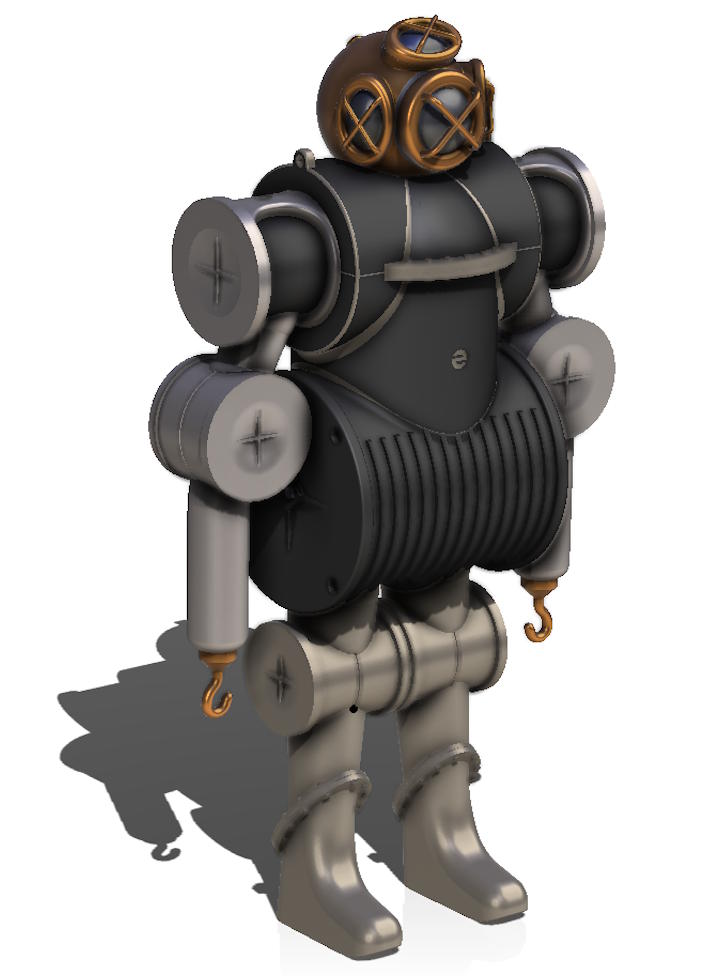
To purchase a 40+ separate file pack of hi rez STL files for the suit model CLICK HERE.
Continue reading for the rest of the article and a free STL file for 3d printing your own suit model.
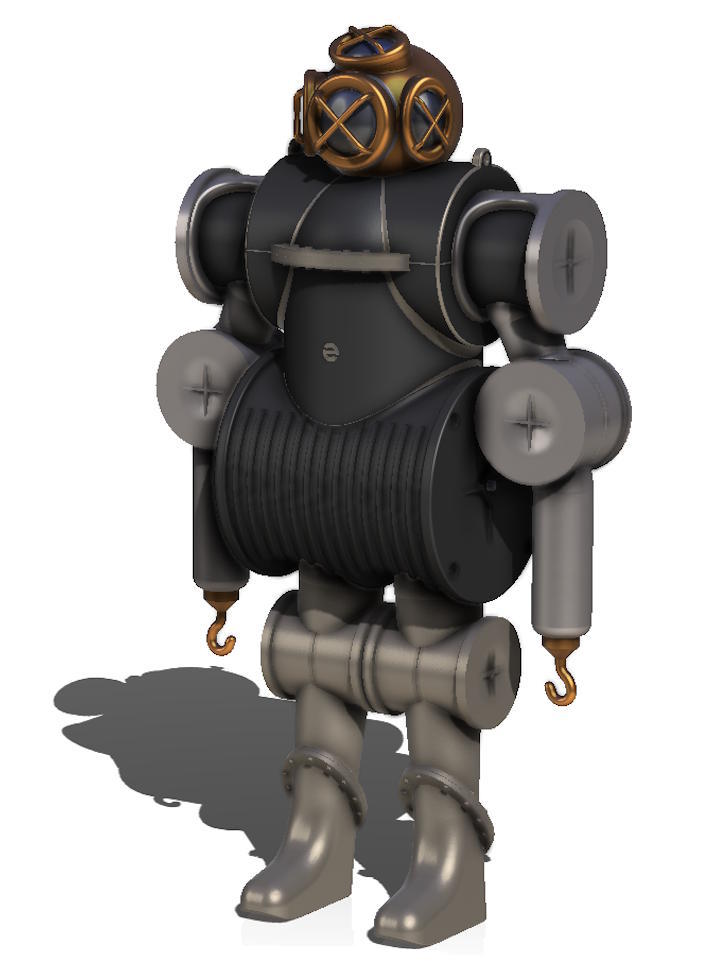
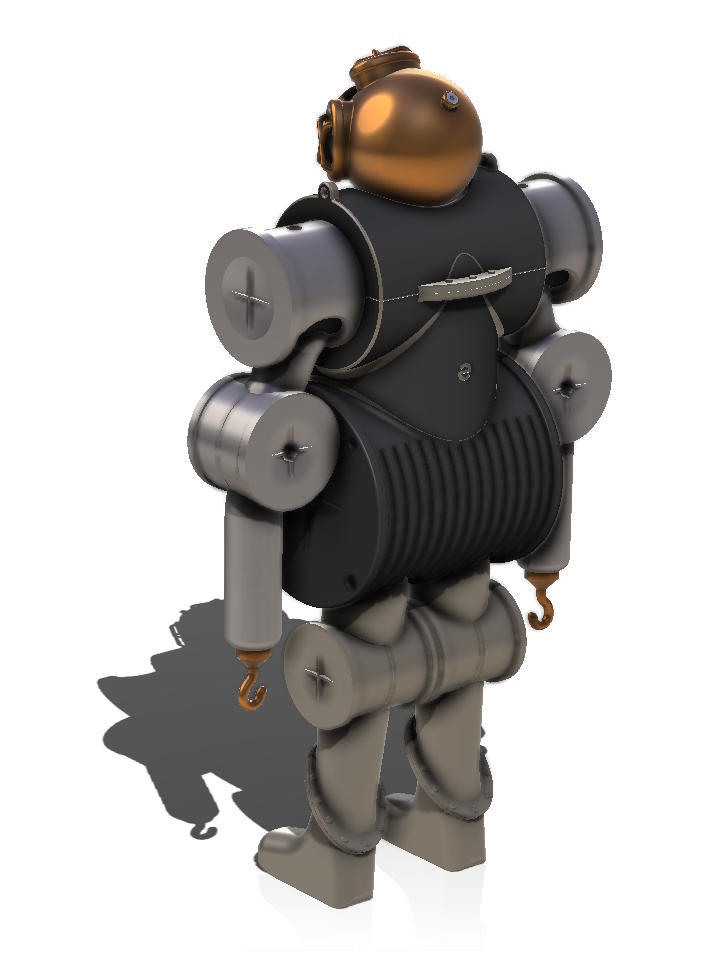

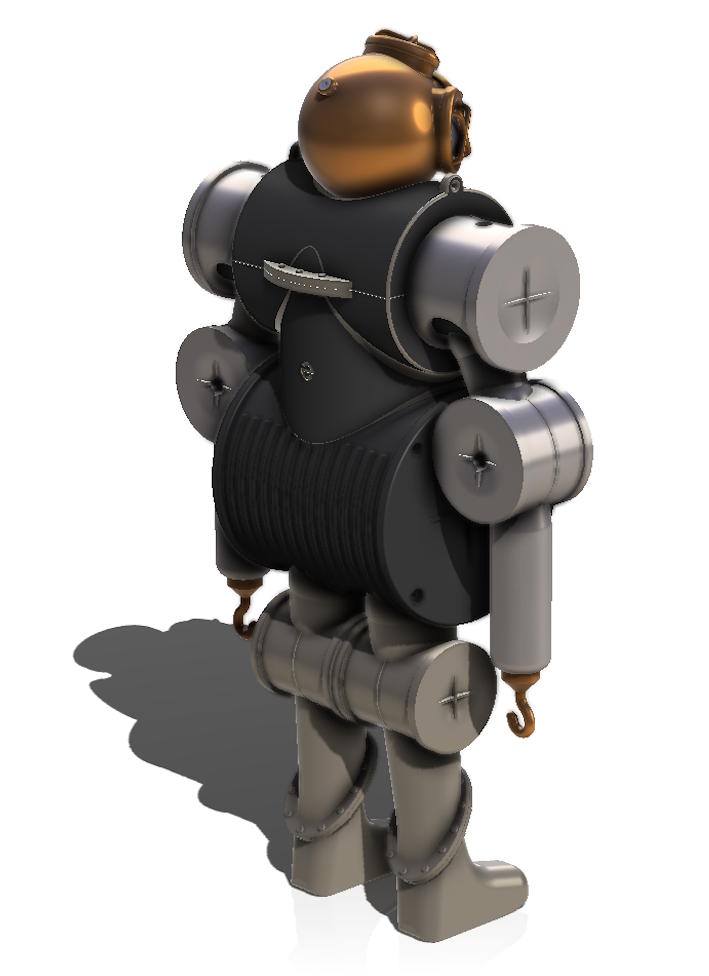
The suit was first tested in Long Island Sound near Eaton’s Point in a 204-foot-deep location, an extraordinary depth for the time. The diver, 17-year-old O.E. Gaudy, had no prior experience with diving suits but was chosen for his background as an engineer aboard the submarine Shark. During the trial, Gaudy successfully descended to the bottom, remaining comfortable and reporting no adverse effects. The suit’s design included joints at the shoulders, elbows, knees, and ankles, secured with rubber gaskets, which allowed for remarkable freedom of movement. Its reinforced armor, featuring projecting ribs, withstood the enormous pressure at depth, while an integrated pump expelled any water seepage. Additionally, the suit featured claw-like hands for gripping objects and hoses for air supply and communication.
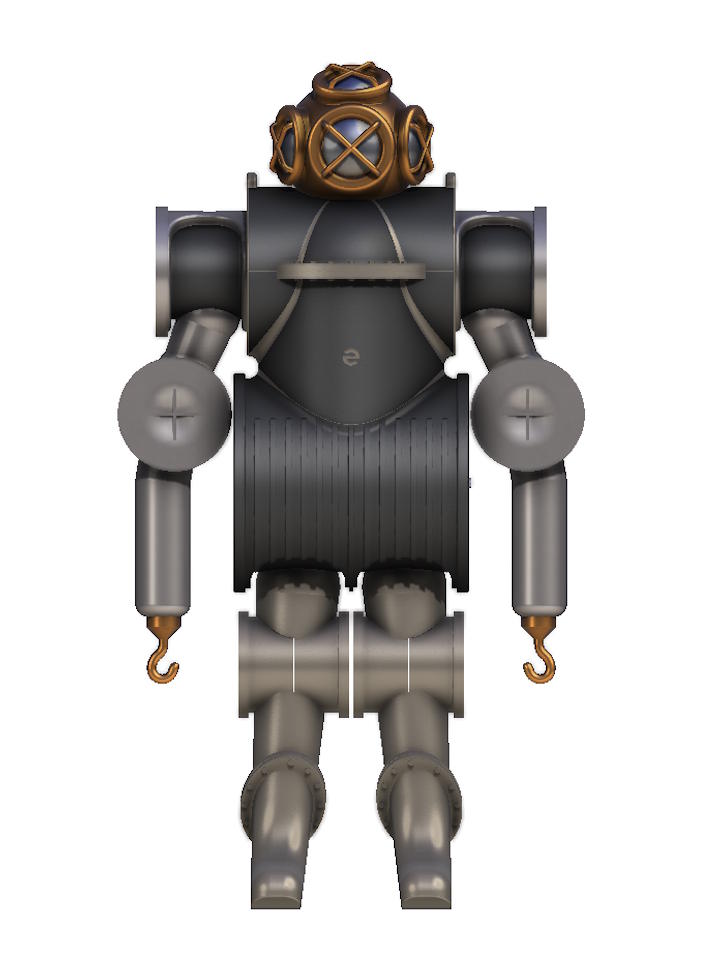
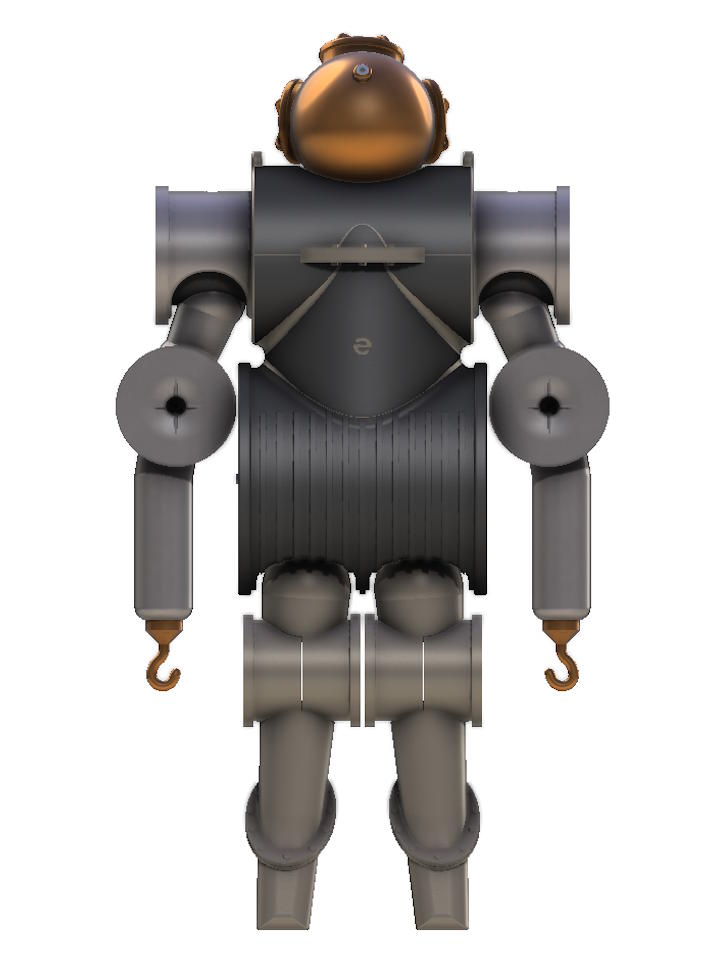
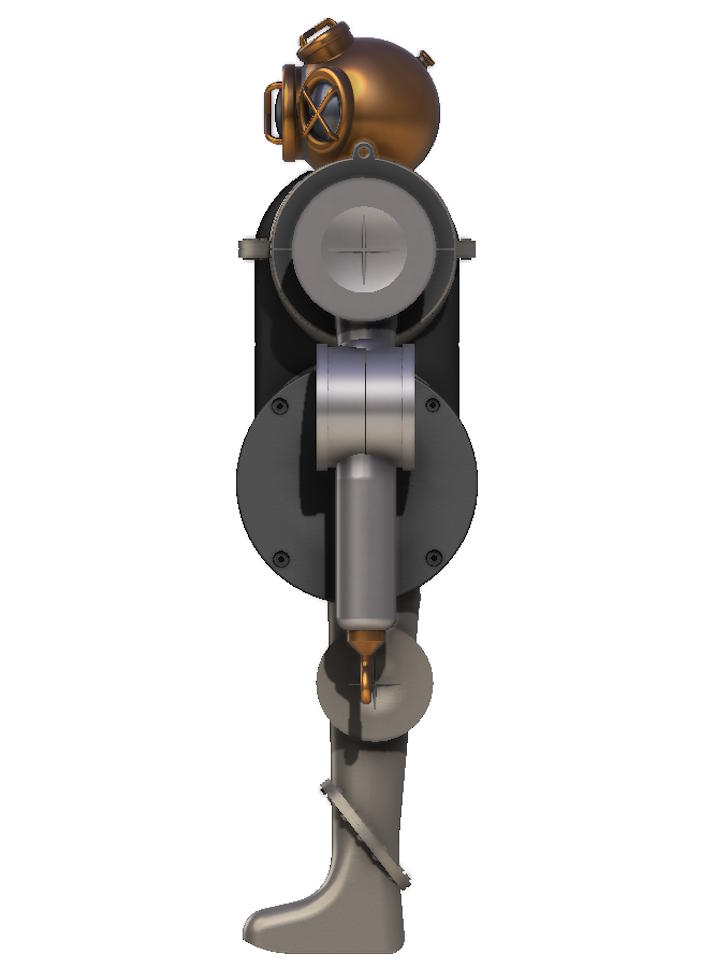
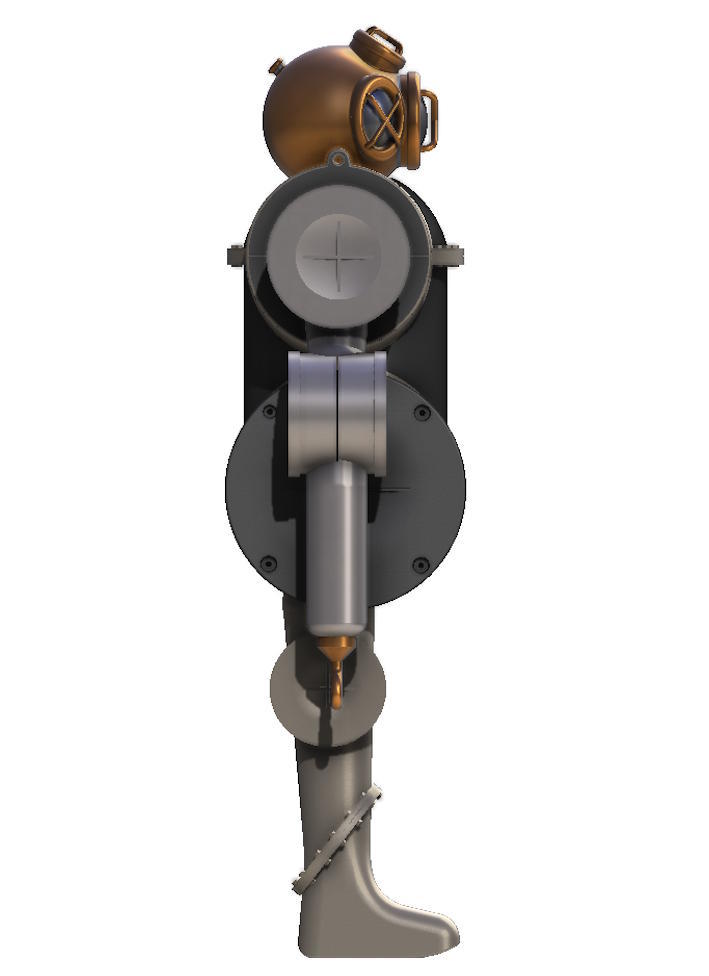
The suit’s maiden test demonstrated its effectiveness, sparking interest in its potential applications, such as salvaging sunken treasure, recovering lost cargo from the Great Lakes, and exploiting underwater resources like pearl fisheries. It also represented a significant improvement over previous diving methods by enabling rapid ascent without exhaustion, as the diver breathed atmospheric air rather than compressed air. Captain Petrie envisioned immense potential for his invention, backed by his Petrie Salvage Company.

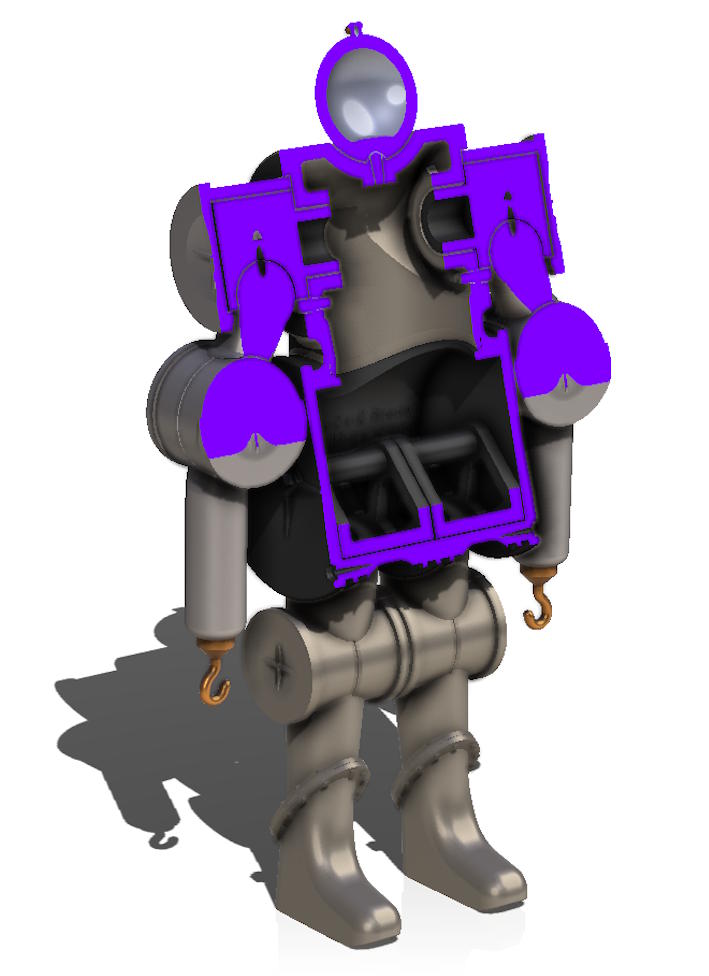
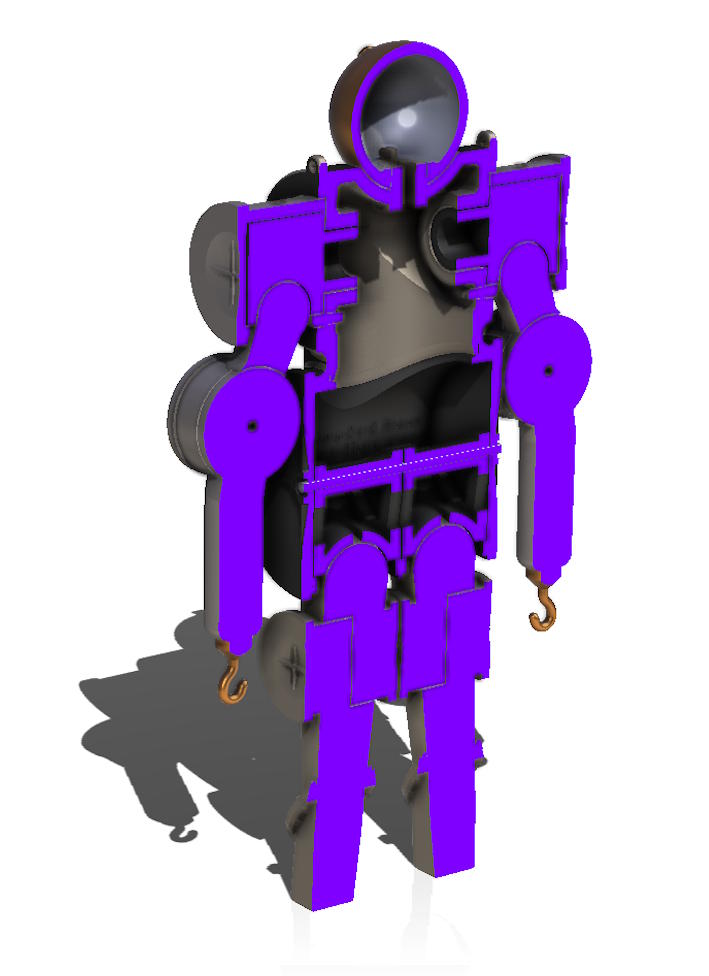
Despite its success, the suit’s operational use was relatively short-lived, as advancements in diving and salvage technology quickly followed. By the mid-20th century, more sophisticated atmospheric diving suits, such as the JIM suit, replaced the Petrie suit. These newer designs were lighter and more versatile, addressing some of the original suit’s limitations. Today, the Petrie Ironman diving suit stands as a remarkable milestone in underwater exploration history. It symbolized humanity’s determination to conquer the ocean’s depths and laid the foundation for modern deep-sea diving technology. Although its current whereabouts are unclear, it remains a testament to innovation and ingenuity in an era of maritime discovery.
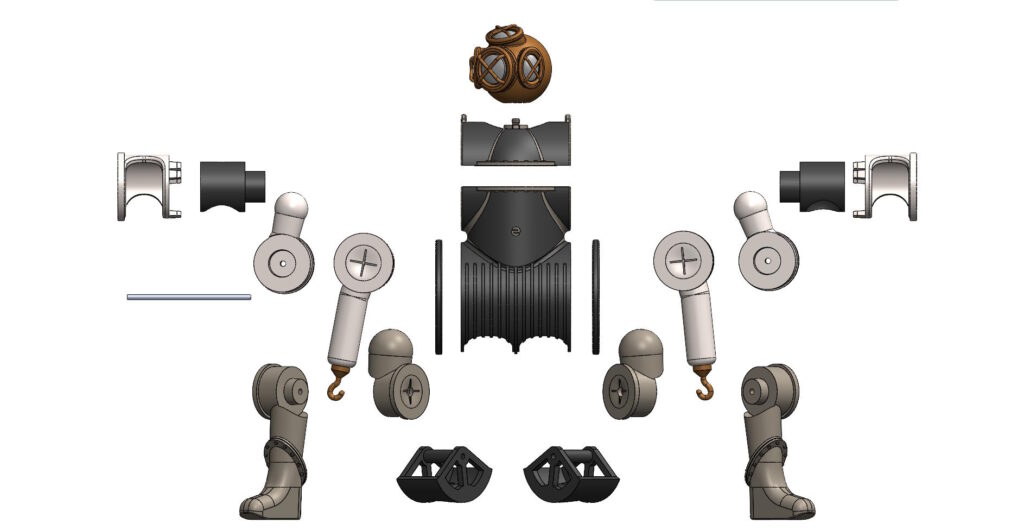
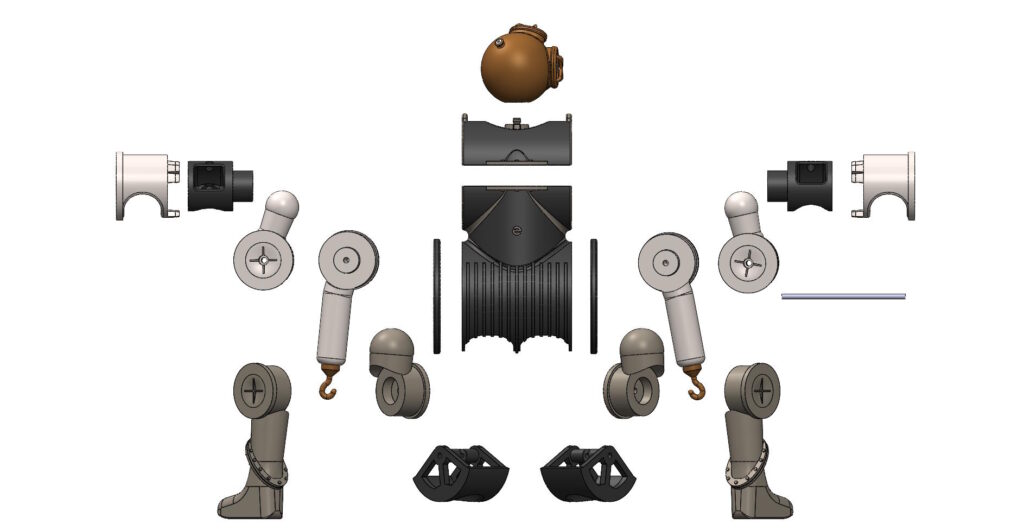
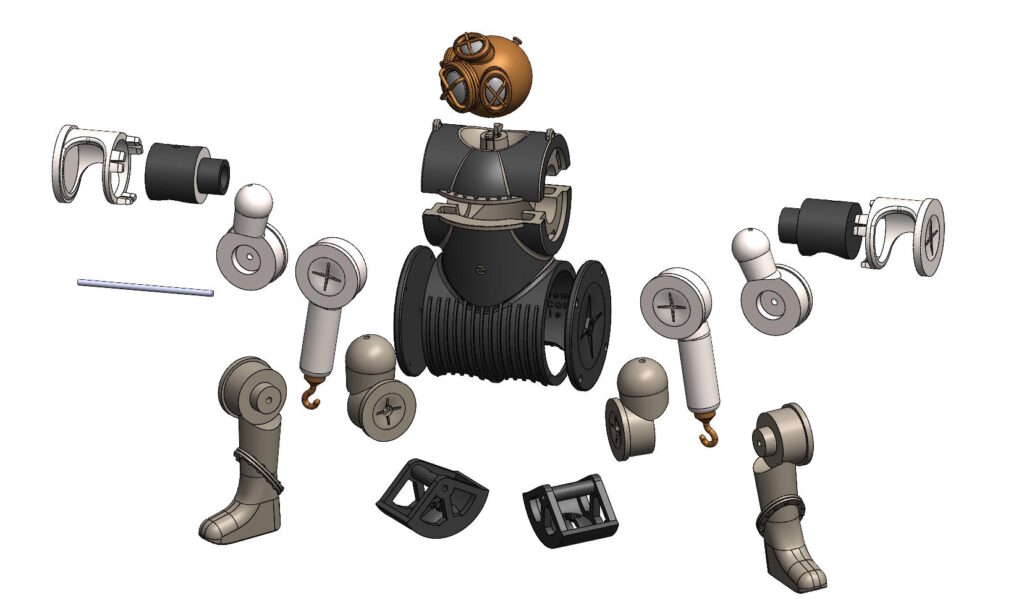
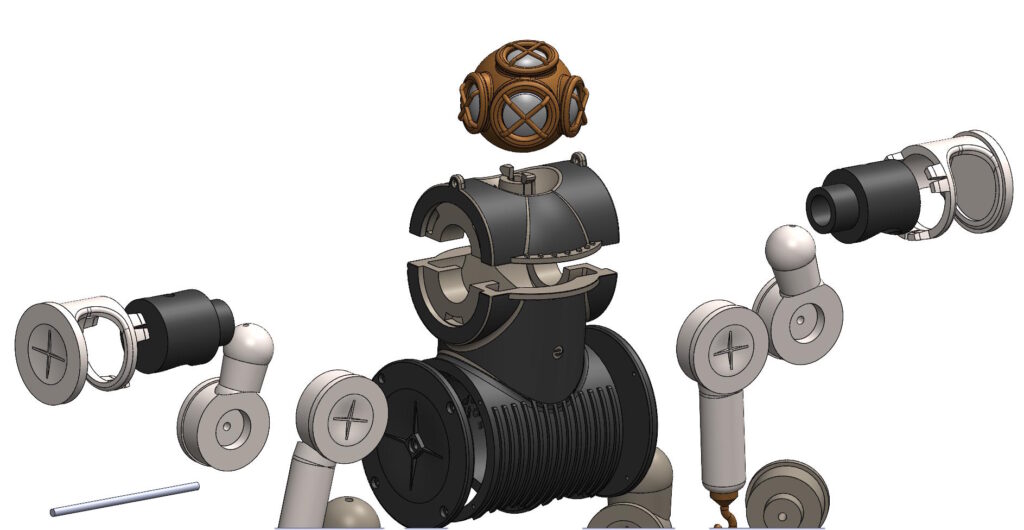
The model is approximately 33cms tall in its original size, easily scalable to any height you like.
To purchase this 40+ separate file pack of hi rez STL files for the suit model CLICK HERE.
The free STL file is below. Enjoy and please share this web page on your social media.





 Users Today : 18
Users Today : 18 Users Yesterday : 88
Users Yesterday : 88 Users Last 7 days : 558
Users Last 7 days : 558 Views Today : 39
Views Today : 39 Views Yesterday : 413
Views Yesterday : 413 Views Last 7 days : 2250
Views Last 7 days : 2250 Total views : 1288101
Total views : 1288101 Who's Online : 1
Who's Online : 1